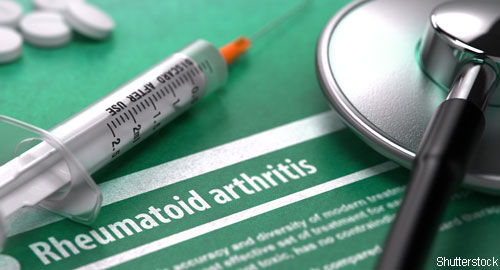 As a defensive end for the New York Giants, Jason Pierre-Paul is doing everything he can to decrease the likelihood of getting arthritis due to sports-related movements. He’s seen firsthand how debilitating arthritis can be, because his best friend’s father suffers from the condition.
As a defensive end for the New York Giants, Jason Pierre-Paul is doing everything he can to decrease the likelihood of getting arthritis due to sports-related movements. He’s seen firsthand how debilitating arthritis can be, because his best friend’s father suffers from the condition.
“He has difficulty walking and ankle pain, and has had some blood clots as a result of having rheumatoid arthritis [RA],” the football player says.
Mr. Pierre-Paul spoke to participants at the Arthritis Foundation’s annual Walk to Cure Arthritis event at Foley Square Park in New York, sponsored by the Hospital for Special Surgery (HSS), on May 14. He shared why, as an elite athlete, he believes it’s important to understand arthritis and how it affects a player’s joints and mobility.
“Many people do not realize that joint health is essential to my performance and ability to play professional football,” says Mr. Pierre-Paul, who does not have arthritis. “To ensure that my joints are healthy, I incorporate cross training into my workout routine to get a break from repetitive motions, [such as] tackling. Incorporating variations of workouts into my routine helps reduce stress on my joints and helps prevent arthritis from developing.”
Mr. Pierre-Paul also talked about the importance of children and adults with arthritis having a team behind them. “The walk helps show people with arthritis that others are supporting research efforts to develop new ways to improve function and relieve pain,” says Theodore Fields, MD, FACP, a rheumatologist at HSS who participated in the event. “It’s beneficial for them to know that physicians, surgeons, physical therapists, as well as their own friends and families are behind them as they work to maximize their function so they can continue participating in athletic activities that they love.”
Treating Athletic Patients
At HSS, rheumatologists and other physicians who treat arthritis take a different approach when treating athletes, compared with non-athletes, in certain situations. HSS has a paradigm for treating patients with arthritis—from recommending physical therapy to injections to medications to small surgeries or big surgeries.
“When time is of the essence, such as for athletic patients, especially those who are professional athletes, we move up the scale of treatment faster,” says Anil Ranawat, MD, a sports medicine surgeon at HSS.
Because injury and not exercise increases the risk of developing post-traumatic arthritis in a joint, if an athlete injures a joint, Linda A. Russell, MD, a rheumatologist at HSS, would use a more aggressive approach in trying to get the joint back to its pre-injured state. “For inflammatory arthritis, [such as] RA, whether in an athlete or non-athlete, it’s important to treat the disease and help prevent damage,” she says. “The patient will feel better and therefore be able to be more active.”
Further, “When working with athletes, we work more closely with a physical therapist to try to find a set of exercises that strengthen all of the muscles around the affected joint in an effort to develop the right program to strengthen and stabilize the joint,” Dr. Russell says. “Non-athletes still need therapy, but not as intense.”
Regarding surgery, Dr. Russell would be more apt to recommend surgery for athletes because they want to get back to participating in sports quickly. “Non-athletes may be happy with a lower level of function, so physical therapy may suffice—especially with minor injuries,” she says. For ligament injuries, she would advise fixing them surgically for athletes, but letting them scar and heal for non-athletes.
Advice on Exercising
An athlete who has arthritis should be aware of it and tailor their exercise regimen to avoid further injury to a joint. Dr. Russell would advise athletes with joint injuries to favor low-impact activities over high-impact activities to preserve joints. She also suggests modifying workouts between high- and low-impact activities. To help patients understand which is which, she defines high impact as any activity in which both feet are off the ground simultaneously (i.e., running or jumping onto a step) and low impact as an activity in which one foot is always on the ground, such as using an elliptical machine.
Dr. Ranawat also supports cross training and explains to patients that by only doing one type of exercise they focus on just one muscle group. By participating in both load-bearing and non-loading bearing exercises, they can focus on several different muscle groups.
Regarding running, Dr. Ranawat says there are different schools of thought about its merits. “Some say it is the best exercise to decrease your body mass index, increase muscle mass and provide cardiac output, while others think too much running will deteriorate your joints because [there’s] too much load on cartilage,” he says. “I think the answer lies somewhere in the middle. Cartilage functions best with low body weight and lean muscle mass around it; it performs well with a certain amount of load, but not too much.”
New Ways of Thinking
In recent years, Dr. Ranawat says new thoughts have emerged regarding treating osteoarthritis (OA). More research has focused on ortho-biologics (i.e., platelet rich plasma [PRP] therapy). At HSS, “PRP is used in selected individuals both with in-office procedures and during surgery. This [therapy] is done by spinning down blood and injecting it into the knee (in outpatient instances) or a defect (during surgery),” he says.
“We’re seeking out more versatile ways—instead of traditional cortisone shots—to help maintain joints with a better local delivery system,” Dr. Ranawat says.
A pilot study at HSS suggests that PRP may play a role in improving clinical outcomes in patients with early onset osteoarthritis after both six months and one year.1 Further, in a systematic review of the basic science evidence for the use of PRP conducted by HSS researchers, the authors concluded that PRP has several potential effects on cartilage repair and osteoarthritis.2
Other New Treatments
HSS is at the forefront of using other new and innovative arthritis treatments. For example, Dr. Fields is prescribing the self-injected biologic medication secukinumab (Cosentyx) for psoriatic arthritis. “This medication was originally approved by the FDA for psoriasis without arthritis, but ongoing studies proved that it also works for psoriatic arthritis,” he says. “Rheumatologists still don’t have as many medications to treat psoriatic arthritis as we need, because different patients respond differently to medications, so it is great to have another medication in our armamentarium.”
Secukinumab can dramatically reduce patients’ number of swollen and tender joints or can even help them reach complete remission without any stiffness, swelling or tenderness, Dr. Fields continues.
For gout, lesinurad (Zurampic) is the most recently FDA-approved medication—although it’s not available to prescribe yet. “This medication can help gout patients who already take a medication—such as allopurinol or febuxostat (Uloric)—and still have been unable to get their uric acid less than 6, to be more likely to get their uric acid down low enough. After a person with gout gets their uric acid below 6 and keeps it there for a period of time, they are extremely likely to not have further gout attacks.”
Researchers are also evaluating running surfaces. In general, athletes prefer softer tracks more than traditional pavements, because they tend to experience less pain in their ankles and hips. Another philosophy under investigation is the merits of barefoot running for younger individuals ages 15 to 20. Advances in braces and footwear can help decrease load.
Proper nutrition is also key for avid athletes. Dr. Russell recommends athletes with injuries get their vitamin D levels checked, because a normal level helps maintain muscle strength.
Final Thoughts
“The key for athletes who have pain is to get evaluated, and not work through the pain,” Dr. Russell concludes. “By understanding why they have pain, patients can make educated decisions regarding which activities to continue and which courses of treatment to take.”
Dr. Ranawat adds, “The goal is to maximize a player’s longevity, whether they are playing professionally or are participating in an exercise they love. It’s important to keep joints healthy and as pain free as possible so athletes can keep playing well into their golden years.”
Karen Appold is a medical writer in Pennsylvania.
References
- Halpern B, Chaudhury S, Rodeo SA, et al. Clinical and MRI outcomes after platelet-rich plasma treatment for knee osteoarthritis. Clin J Sport Med. 2013 May;23(3):238–239. doi: 10.1097/JSM.0b013e31827c3846.
- Smyth NA, Murawski CD, Fortier LA, Cole BJ, Kennedy JG. Platelet-rich plasma in the pathologic processes of cartilage: review of basic science evidence. 2013 Aug;29(8):1399–1409. doi: 10.1016/j.arthro.2013.03.004. Epub 2013 May 11.

